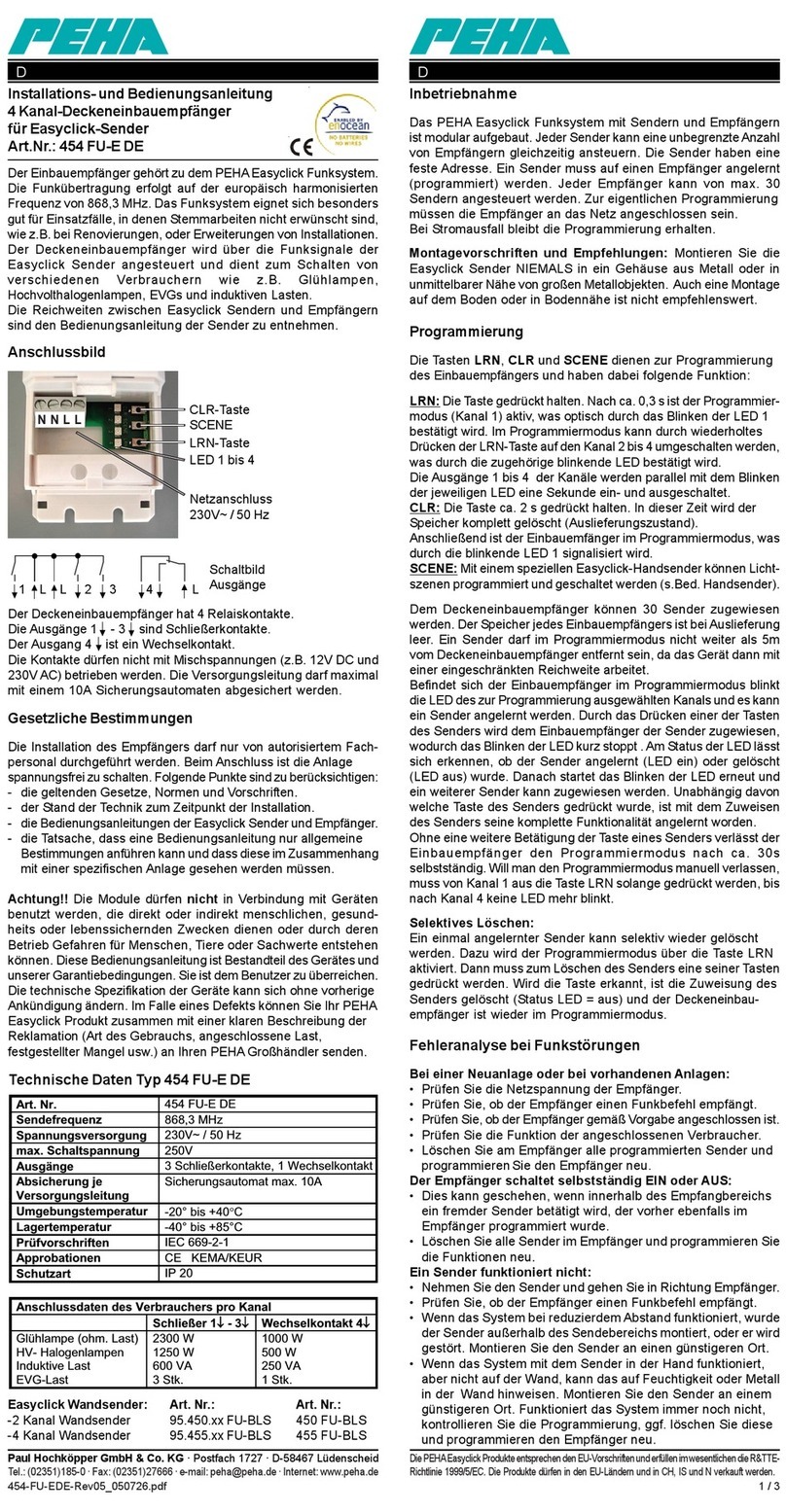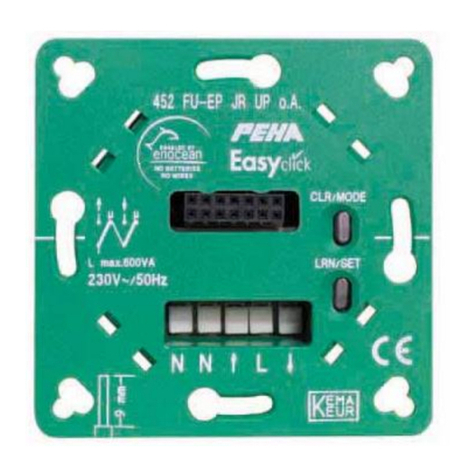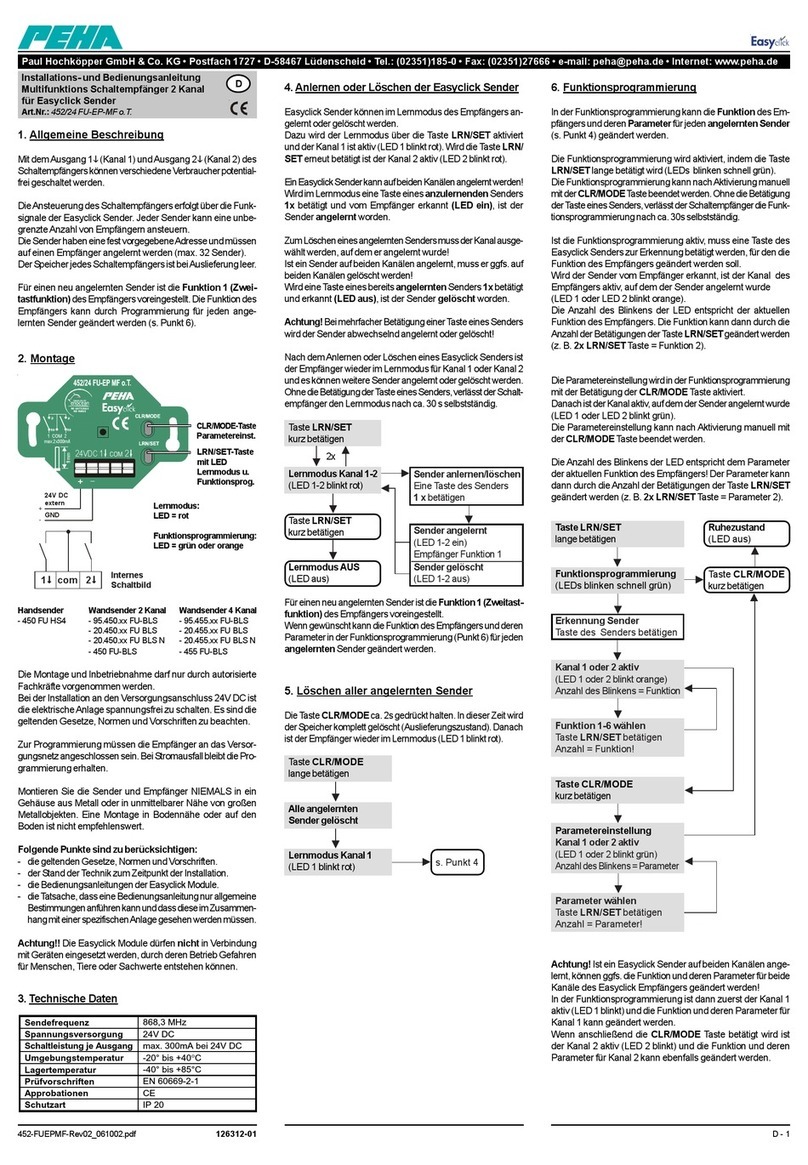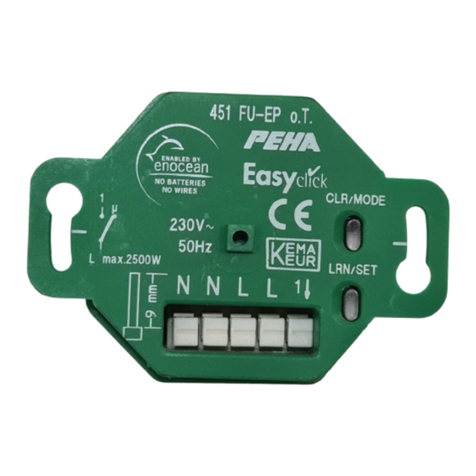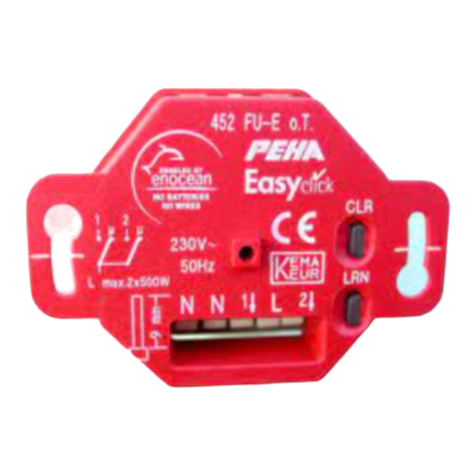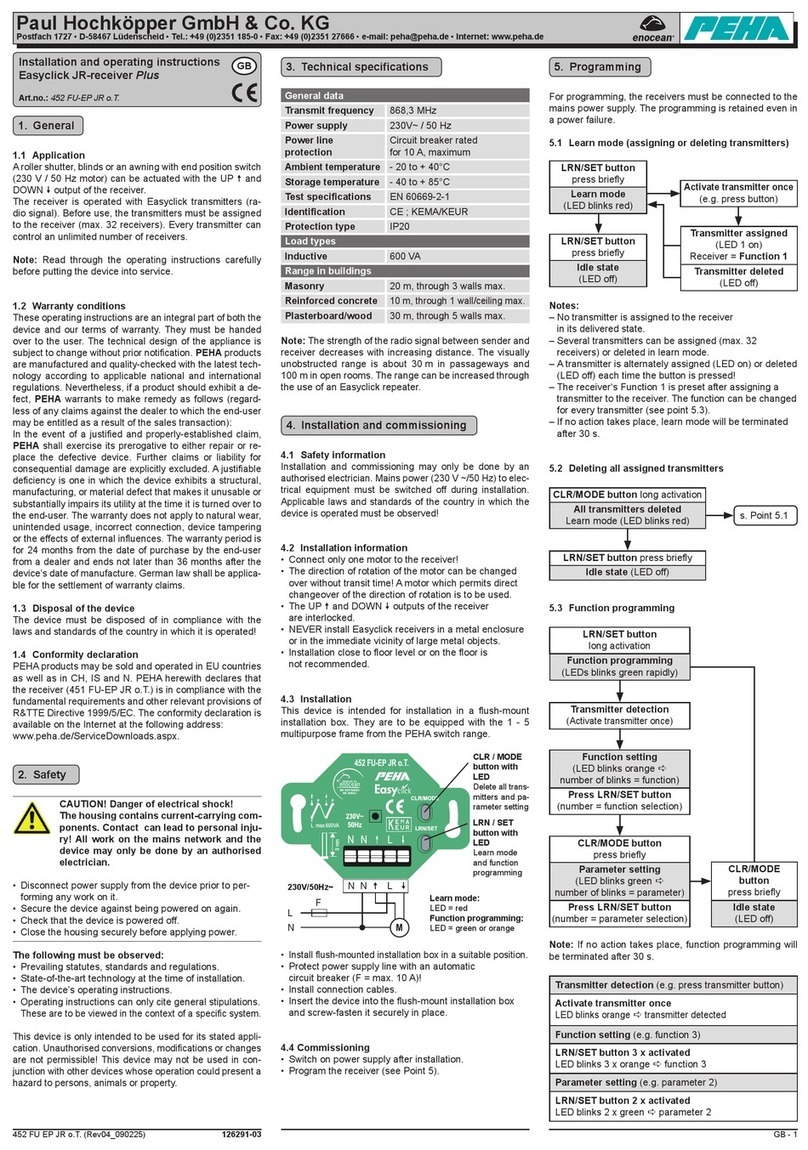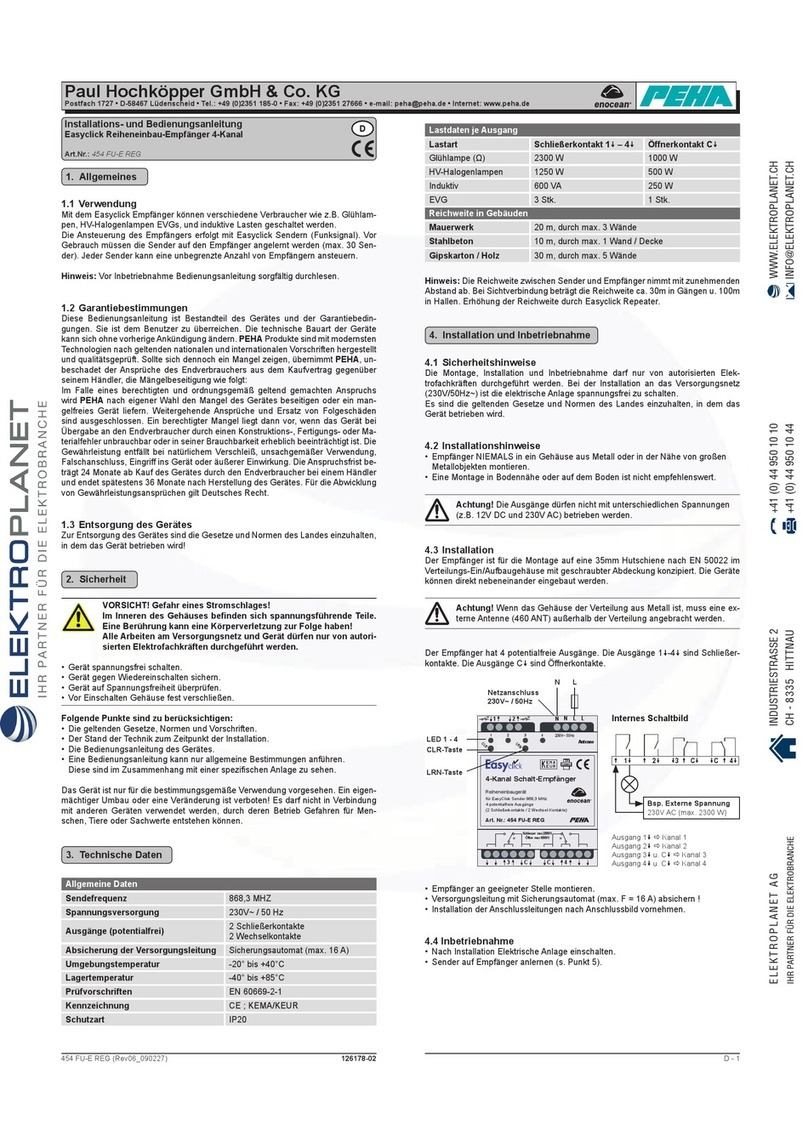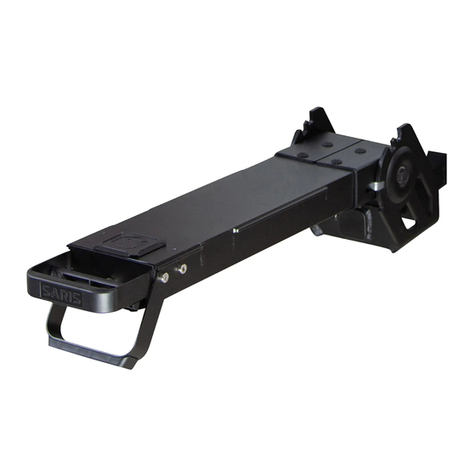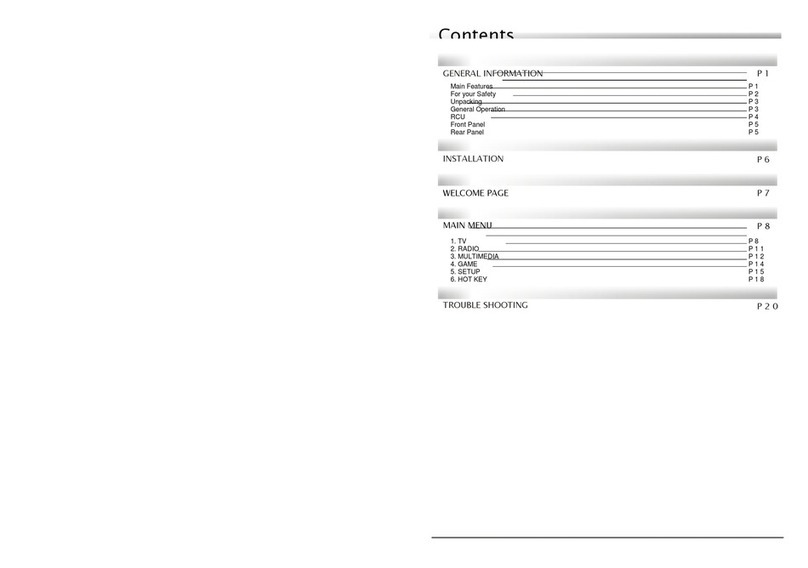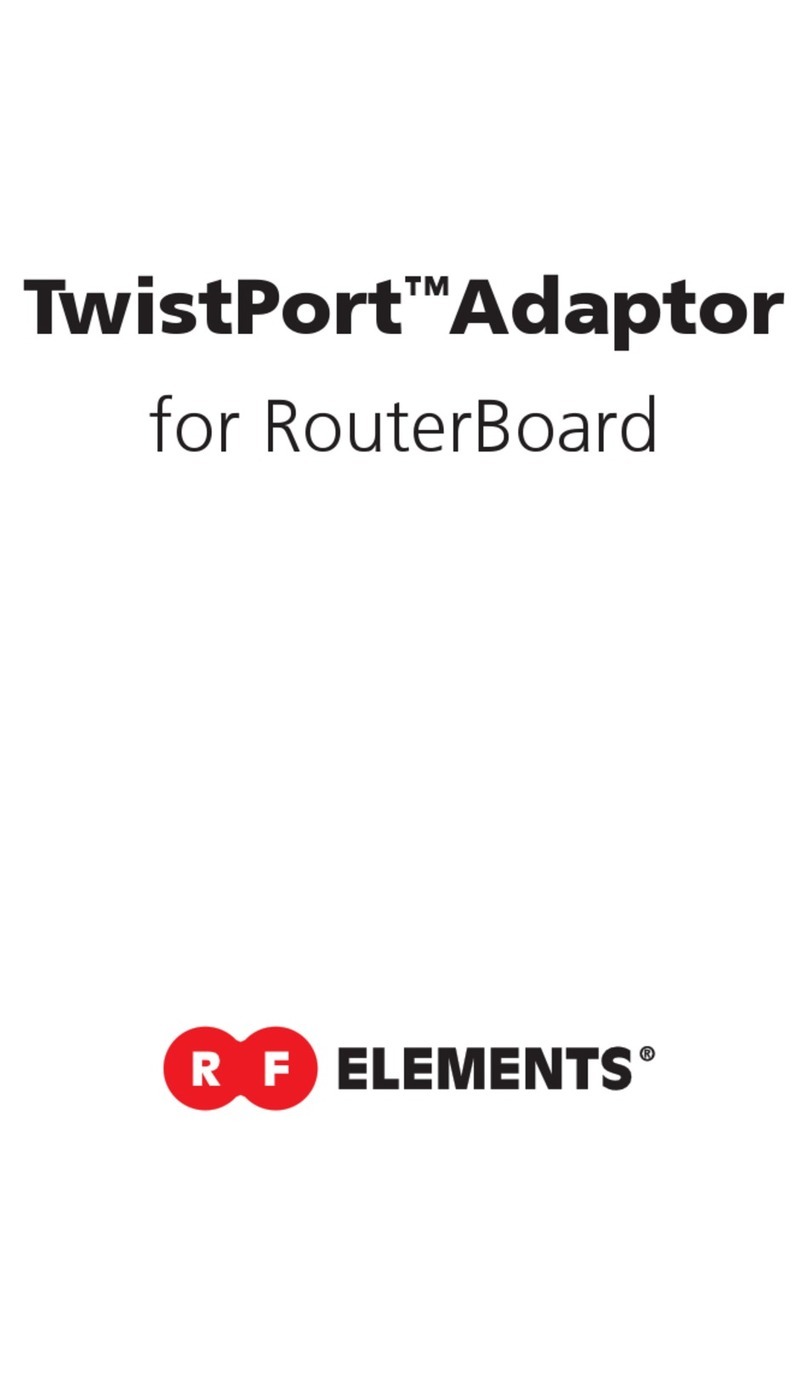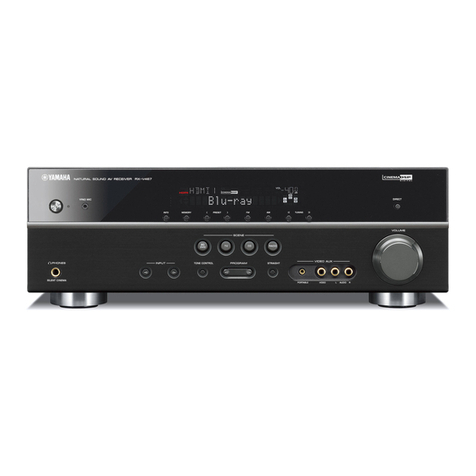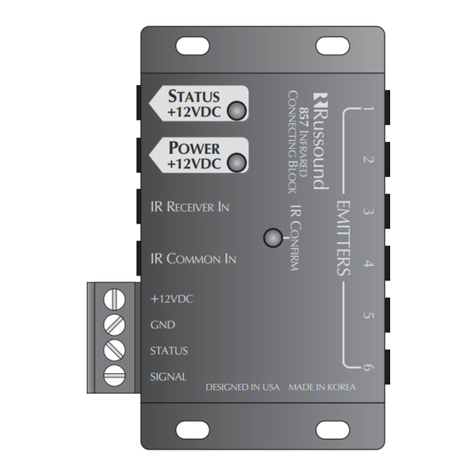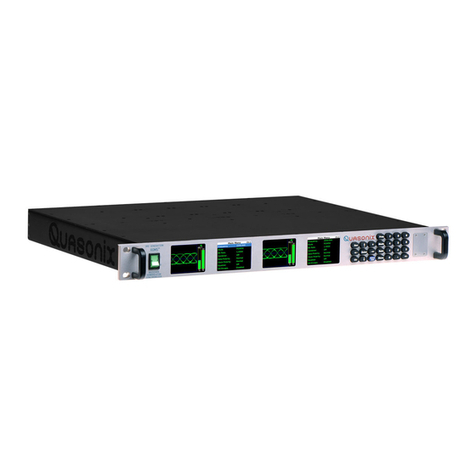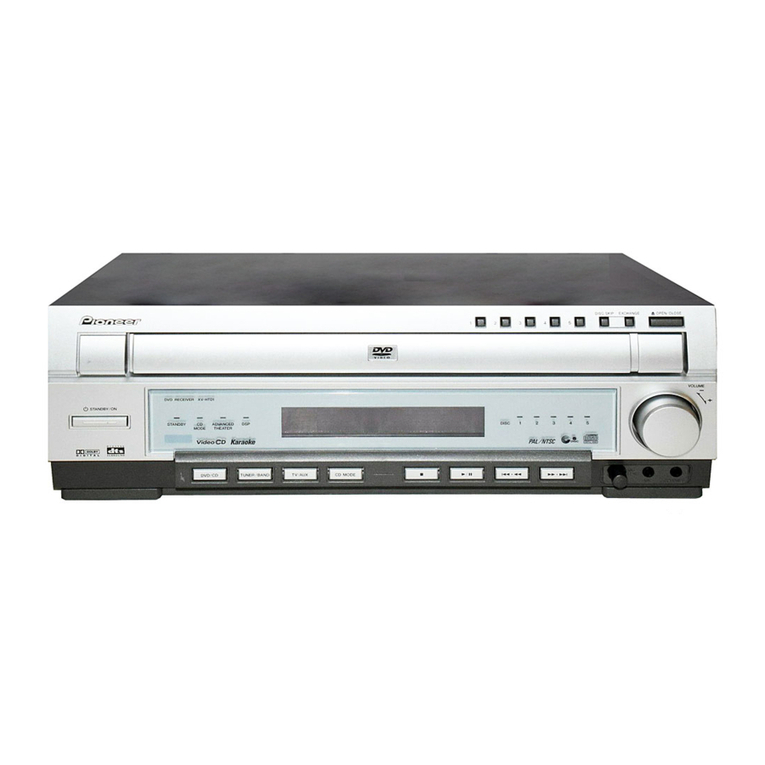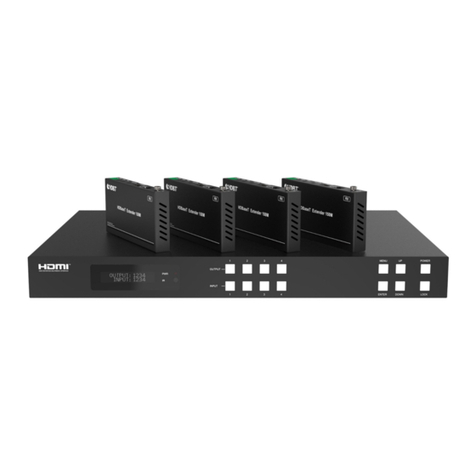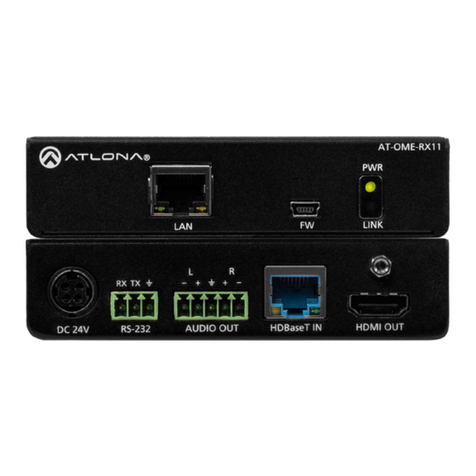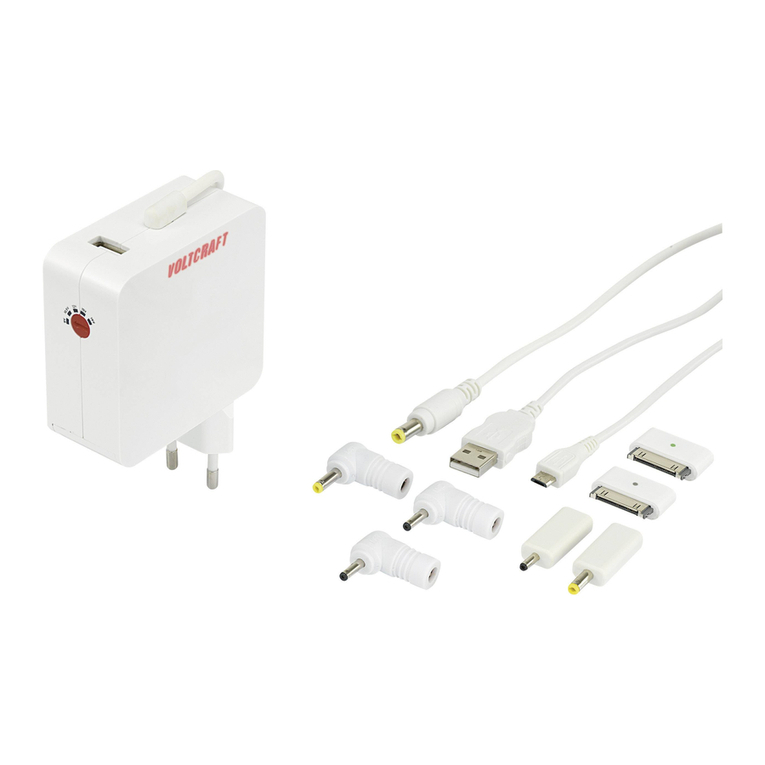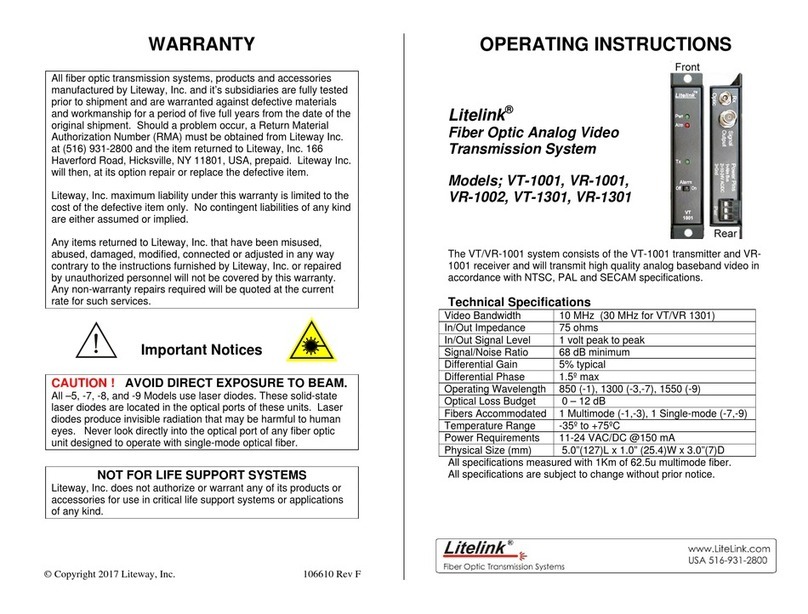
PEHA_M_940_DCF (Rev04_130311)
PEHA Elektro GmbH & Co. KG
126008-04
Der DCF Empfänger ist in einem Kunststoff-Spritzgußgehäuse montiert und wird über
ein dreiadriges Kabel an das Steuermodul 940 STM angeschlossen. Der Empfänger
besitzt eine Modulations- und ein Feld-stärke-LED. Durch den Anschluss des DCF-
Empfängers an die DCF-Klemme des PHC Steuermoduls 940 STM wird die interne
Uhr des Steuermoduls über Funk per DCF-Signal automatisch eingestellt. Damit
entfällt die manuelle Einstellung der Uhr. Nach ca. 5 Minuten erscheint die aktuelle
Zeit in der Anzeige des Steuermoduls.
Schraubklemme
0V braun
ANT. weiß
+5 V grün
DCF 77 - EMPFÄNGER
Senderrichtung (Frankfurt am Main)
251117
MOD.
FELD
941 DCF
-B +A
RS485 DCF
0V ANT. +5V
Steuermodul
Für den DCF-Empfänger ist ein Installationsort zu wählen, an dem ein ausreichender
Empfang des DCF-Signals vorhanden ist (s. Antennenausrichtung). Ist die Empfangs-
leistung des DCF-Signals sehr gering, kann es sein, dass die Funktion des DCF-
Emfängers beeinträchtigt ist und deshalb die interne Uhr des Steuermoduls nicht
mehr automatisch eingestellt wird.
Das Gehäuse verfügt über ein doppelseitiges Klebe-Pad für die Montage an glatten
Flächen (z.B. Möbel/Fenster). Als Zubehör ist ein verstellbarer Wandhalter erhältlich.
Die Installation des Anschlusskabels darf nicht parallel zu Schalt- oder Versorgungs-
leitungen erfolgen, sondern sollte einzeln ausgeführt werden, um Störungen des
Uhrenbausteins des PHC Steuermoduls zu vermeiden. Die verwendete Leitungslänge
des Anschlusskabels zwischen dem Steuermodul und dem DCF-Empfänger sollte nicht
mehr als maximal 3m betragen.
Die beste Empfangsleistung wird erzielt, wenn die Längsseite des DCF- Empfängers
(siehe Pfeilsymbol des Aufdrucks) in Senderrichtung (Frankfurt am Main) ausgerichtet
ist. Der DCF-Empfänger kann unter Beachtung der Feldstärke- und Modulations-LED
optimal zur Senderrichtung ausgerichtet werden. Eine praktische Vorgehensweise
besteht darin, zuerst die mini-male Feldstärke (Feldstärke LED dunkler) einzustellen
und danach durch langsame Drehung um ca. 90° in Längsrichtung den DCF-Empfänger
optimal zur Senderrichtung auszurichten (Feldstärke LED heller).
Eine helle Feldstärkeanzeige sagt noch nichts über die Empfangsqualität aus,
da auch eventuell Störsignale in der Empfangsbandbreite des Empfängers mit
ausgewertet werden. Vielmehr zeigt eine streng im Sekundentakt blinkende
Modulations-LED in Verbindung mit einer möglichst hellen Feldstärkeanzeige, dass
gute Empfangsverhältnisse vorliegen. Es sollte ein Abstand von möglichst mehreren
Metern zu Computer- oder Fernsehmonitoren, sowie mind. 30cm zu jeglichen
Metallgegenständen eingehalten werden.
GB
The DCF receiver is mounted in a plastic moulded housing and is connected by a
3-wire cable to the 940 STM control module. The receiver features a modulation and
a eld intensity LED. By connecting the DCF receiver to the DCF terminal of the PHC
control module 940 STM the internal clock of the control module is set automatically
via radio by DCF signal. Manual setting of the clock is thereby not needed. After about
5 minutes the current time appears in the display of the control module.
0V brown
ANT. white
+5 V green
DCF 77 - EMPFÄNGER
Senderrichtung (Frankfurt am Main)
251117
MOD.
FELD
941 DCF
-B +A
RS485 DCF
0V ANT. +5V
Steuermodul
For the DCF receiver an installation site needs to be selected at which there is sufcient
reception of the DCF signal available (s. antenna orientation). If the reception power of
the DCF signal very low then it may be that the function of the DCF receiver is impaired
and the internal clock of the control module is therefore no longer set automatically.
The housing features a double-sided adhesive pad for mounting on smooth surfaces
(e.g. furniture/windows). An adjustable wall holder is available as an auxiliary. The
installation of the connection cable may not be done parallel to the switching and
supply lines, but should be done individually to avoid malfunctions of the clock module
of the PHC control module. The line length of the connection cable between the control
module and the DCF receiver should not be longer than 3 metres.
The best reception power is achieved when the long side of the DCF receiver (refer
to arrow symbol on the label) points in the transmitter direction (Frankfurt am Main).
The DCF receiver can be oriented optimally to the transmitter direction while observing
the eld intensity and modulation LED. A practical procedure consists of rst setting
the minimum eld intensity (eld intensity LED darker) and then, by slowly turning by
90° in longitudinal direction, to orient the DCF receiver optimally to the transmitter
direction (eld intensity LED brighter).
A bright eld intensity display does not say anything about the reception quality,
because even possible interfering signals in the reception bandwidth of the receiver
are interpreted as well. Rather a modulation LED that is ashing at a steady rate of
one per second in connection with a bright as possible eld intensity indication that
the reception conditions are good. A distance of several metres if possible to computer
or television monitors as well as at least 30 cm to any metal objects should be kept.
